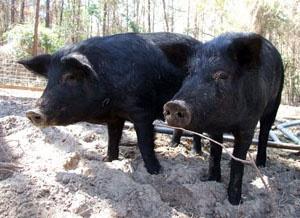Lard is made from pork fat. It is clarified or rendered through a process that involves heating the fat.
When used as a cooking fat, nutritionally speaking, lard has nearly one quarter the saturated fat and more than twice the mono-unsaturated fats as does butter. It is also low in omega-6 fatty acids which are known to promote inflammation.
There is a pervasive myth that animal fats increase the risk of heart disease. Our great, great grandparents consumed lard and butter and experienced extremely low rates of heart disease.
- There is no evidence that saturated fat consumption raises the risk of heart disease.
- A low fat diet, which is also a high-carb diet, can lead to an increase in blood triglyerides which potentially may increase your risk factor for heart disease.
- Saturated fat intake raises HDL cholesterol which is associated with a lower risk of heart disease.
- The diseases of modern “civilization” including heart disease and diabetes skyrocketed as animal fats were replaced by factory fats including vegetable oils and margarine.
Other benefits of lard include its neutral flavor. Some oils such as coconut may flavor your food while cooking with them.
Lard is very economical compared to many cooking oils.
Lard is high in Vitamin D. Lard is the second highest food source of Vitamin D after cod liver oil. One tablespoon has 1000iu's. Also important, is that Vitamin D is a fat soluble vitamin and therefore requires fatty acids-including saturated fatty acids-to be absorbed and utilized by the body. Lard provides the perfect package of Vitamin D along with the required fatty acid cofactor. One catch, however, only lard from pastured hogs contains Vitamin D since they must have access to
sunlight to synthesize the Vitamin D and store it in their fatty tissues. Purchase your lard from a butcher or farmer who can tell you how their pigs are raised.
In addition, providing cholesterol through quality fats reduces the burden on the body to produce cholesterol. Dietary cholesterol from whole foods like lard, supports inflammation management and hormone production.
Simple Advise for Avoiding Unhealthy Food
2 rules of thumb:
- Avoid any food with a TV commercial.
- Avoid any food that your great, great grandmother wouldn't recognize.
Recipe for Rendering Lard
- Use a pot or crock pot.
- Pour 1/2 cup of water into the pot.
- Cut the pork fat into pieces.
- Heat over medium heat.
It may take several hours for the fat to liquefy. When it has liquefied, you will notice some solids remain. You may remove these using a strainer or simply remove these pieces with a slotted spoon. Pour the lard into containers and refrigerate.

